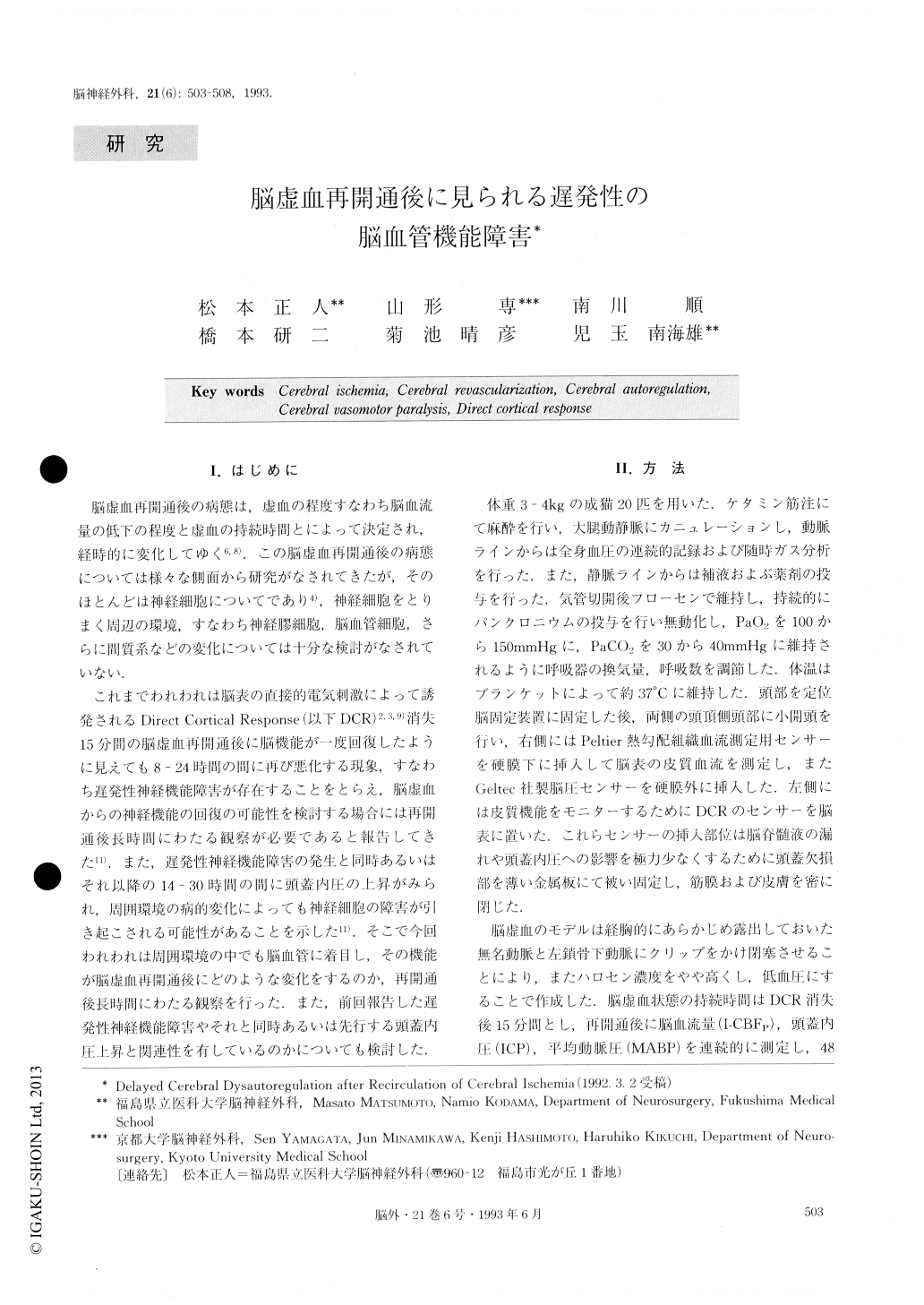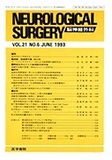Japanese
English
- 有料閲覧
- Abstract 文献概要
- 1ページ目 Look Inside
I.はじめに
脳虚血再開通後の病態は,虚血の程度すなわち脳血流量の低下の程度と虚血の持続時間とによって決定され,経時的に変化してゆく6,8).この脳虚血再開通後の病態については様々な側面から研究がなされてきたが,そのほとんどは神経細胞についてであり4),神経細胞をとりまく周辺の環境,すなわち神経膠細胞,脳血管細胞,さらに間質系などの変化については十分な検討がなされていない.
これまでわれわれは脳表の直接的電気刺激によって誘発されるDirect Cortical Response(以下DCR)2,3,9)消失15分間の脳虚血再開通後に脳機能が一度回復したように見えても8-24時間の間に再び悪化する現象,すなわち遅発性神経機能障害が存在することをとらえ,脳虚血からの神経機能の回復の可能性を検討する場合には再開通後長時間にわたる観察が必要であると報告してきた11).また,遅発性神経機能障害の発生と同時あるいはそれ以降の14-30時間の間に頭蓋内圧の上昇がみられ,周囲環境の病的変化によっても神経細胞の障害が引き起こされる可能性があることを示した11).そこで今回われわれは周囲環境の中でも脳血管に着目し,その機能が脳虚血再開通後にどのような変化をするのか,再開通後長時間にわたる観察を行った.また,前回報告した遅発性神経機能障害やそれと同時あるいは先行する頭蓋内圧上昇と関連性を有しているのかについても検討した.
Sequential changes of cerebral autoregulation were studied in 20 cats after recirculation of cerebral ischemia. The cerebral autoregulation was evaluated by autoreg-ulation index (A.I.), calculating %� cerebral blood flow (CBF)/� cerebral perfusion pressure (CPP), with chang-ing the mean arterial blood pressure (MABP) within 80-130mmHg. Duration of ischemic insult was 15min after disappearance of direct cortical response (DCR). Follow-ing recovery of cerebral circulation, MABP, CBF and in-tracranial pressure (ICP) were observed sequentially for at least 48 hours.
In 6 of 20 cats the autoregulation was disturbed early after recirculation, and the ICP was increased, resulting in no cerebral blood flow (early deteriorated group).In the other 14 cats the autoregulation was restored im-mediately, but in 7 of the 14 cats it was disturbed again after 24 hours following recirculation (delayed deterio-rated group), finally the ICP was elevated and the CBF became 0 as same as early deteriorated group. In another 7 cats it was not disturbed until 5 (lays. The changes in CBF following insult were five patterns. These were classified into type A (Gradual decrease), type B (Tran-sient increase), type C (Constant maintenance), type D (Relatively rapid decrease) and type E(Rapid decrease). The delayed cerebral dysautoregulation occurred in the types except for type A and type E.
These results suggested there was close relation be-tween delayed dysautoregulation and delayed neuronal dysfunction that we reported previously. Moreover, we considered the delayed dysautoregulation could be speculated from the value of ICP/CBF immediately after recirculation and the pattern of the changes in CBF dur-ing ischemic insult.

Copyright © 1993, Igaku-Shoin Ltd. All rights reserved.


